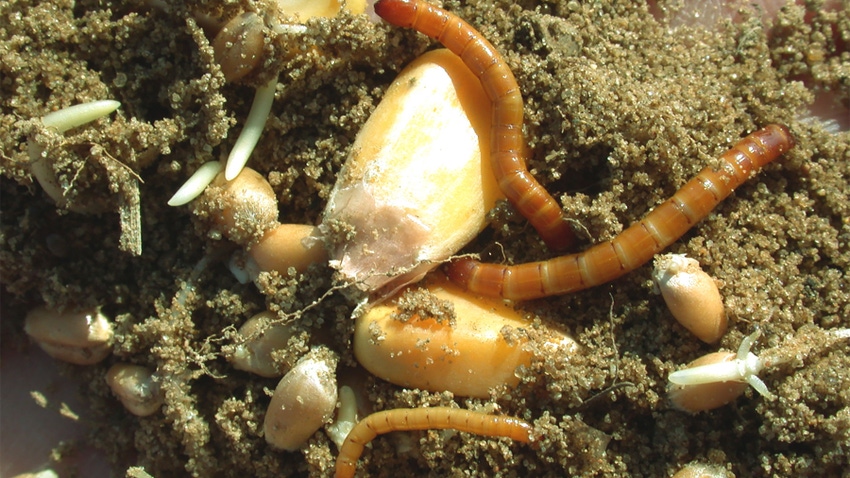April 25, 2024

A warm spring did its part to set the stage for early planting, but that warm weather could also spell trouble for insect pest pressure. While it can be difficult to predict which insects will cause the most problems, there are ways to stay on top of early-season pests.
Alexie Garner, Indiana retail sales agronomist for Brevant Seeds, says consistent field scouting early in the season is key to catching pest issues before they slip through the cracks. She notes it’s especially important to pay attention to fields planted early.
“Those earlier-planted fields tend to be where we see some of that stuff pop up first, and it can indicate where we’re going to see some major issues throughout the season,” Garner adds.
Check for early seedling damage
One of the key areas Garner checks for her clients is seedling damage from insect feeding. She says, “As insects swarm in, they’re going to be looking for something green, and so those early fields and really late fields are where we’re at most risk for pest damage.”
Christian Krupke, professor of entomology at Purdue, explains that early planting does not necessarily mean higher insect pressures. Rather, he says the shifted time frame simply means insects will appear earlier.
“With a lot of the insects, their timing resembles the crop timing,” Krupke adds. “If it’s too cold to plant the crop and for the crop to grow, the insects are also not going to be on the move.”
He describes this temperature-driven shift as “moving the slider” on the calendar for insect activity. A mild winter also affects insect survival through the winter months, meaning survival rates for some insects could be higher this year. This could potentially translate to issues with those specific insects.
Potential problem pests
One insect to watch for is the black cutworm moth. Krupke says their early arrival following a mild winter could pose a problem if producers experience a compressed spring planting season. In that scenario, black cutworms will move straight to feeding on seedlings after feeding on winter annual weeds.
Stinkbugs are another insect that may have experienced better winter survival, and they could have a greater presence in soybean fields.
Another pest to watch for this season, while not an insect, is the slug. Krupke explains that slugs typically are a bigger problem in fields with crop residue. His advice is to use row cleaners to ensure residue is not close to seedlings.
“Most people miss slugs because they’re not insects, and they’re not controlled with insecticides,” Krupke says. “People forget about them, but if you were making a ranking of early-season pest issues, they would be at the top.”
As for mitigating insect issues during this warm spring, Garner recommends selecting a strong hybrid that is resilient to prominent pests. She says Corteva’s new PowerCore Enlist and Vorceed Enlist traits offer increased protection against some common insect pests, like black cutworm.
“We’ve got a lot of modes of actions and protection levels for a very wide variety of pests now with these new trait packages,” Garner adds.
Ultimately, Krupke says producers need to look for anything that appears out of the ordinary, like yellowing leaves, leaning plants and overall weak seedlings. If you see these symptoms, look closer to see if an insect pest or slug is the culprit. Use the Purdue Corn and Soybean Field Guide as a reference.
About the Author(s)
You May Also Like






